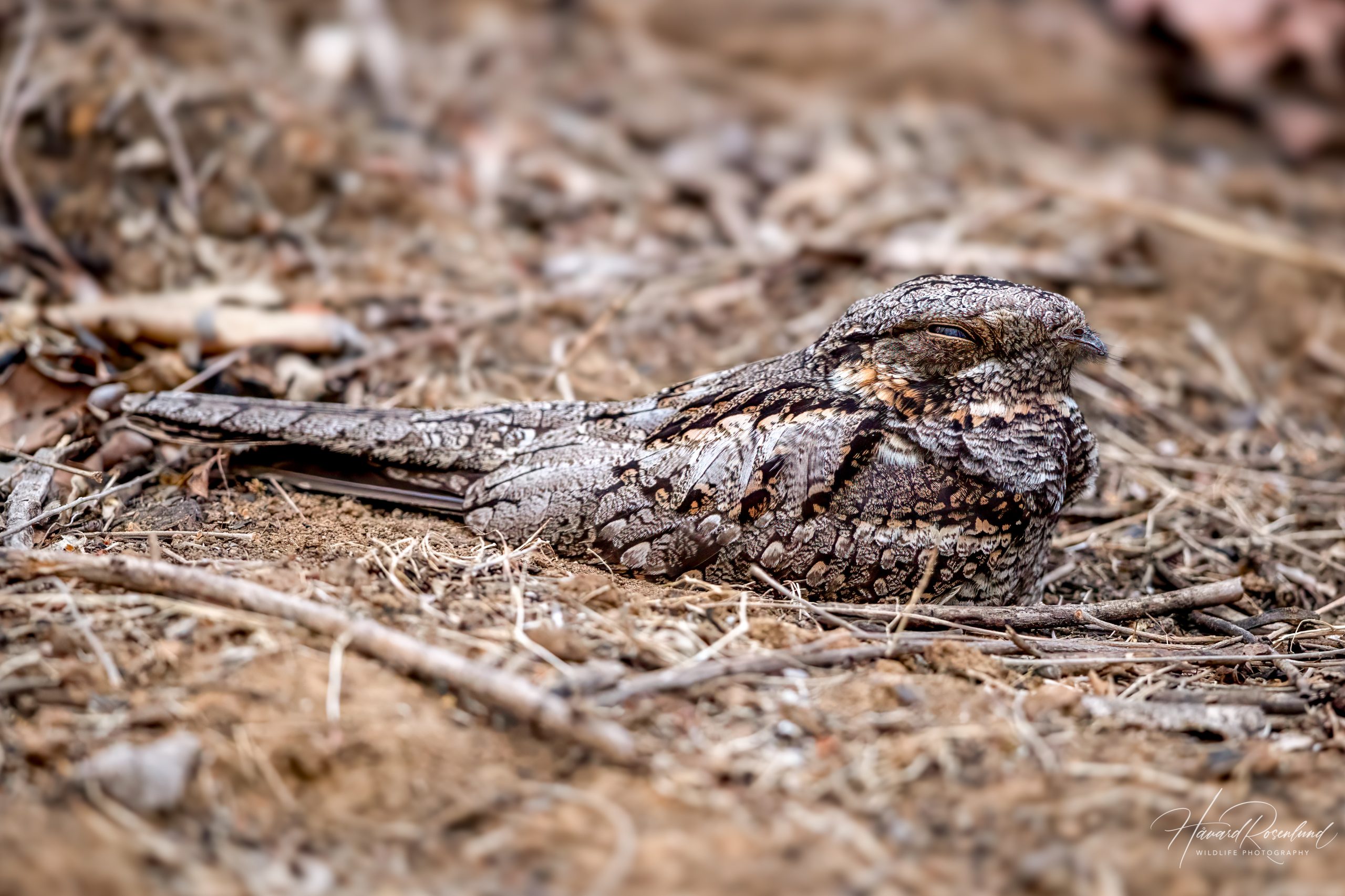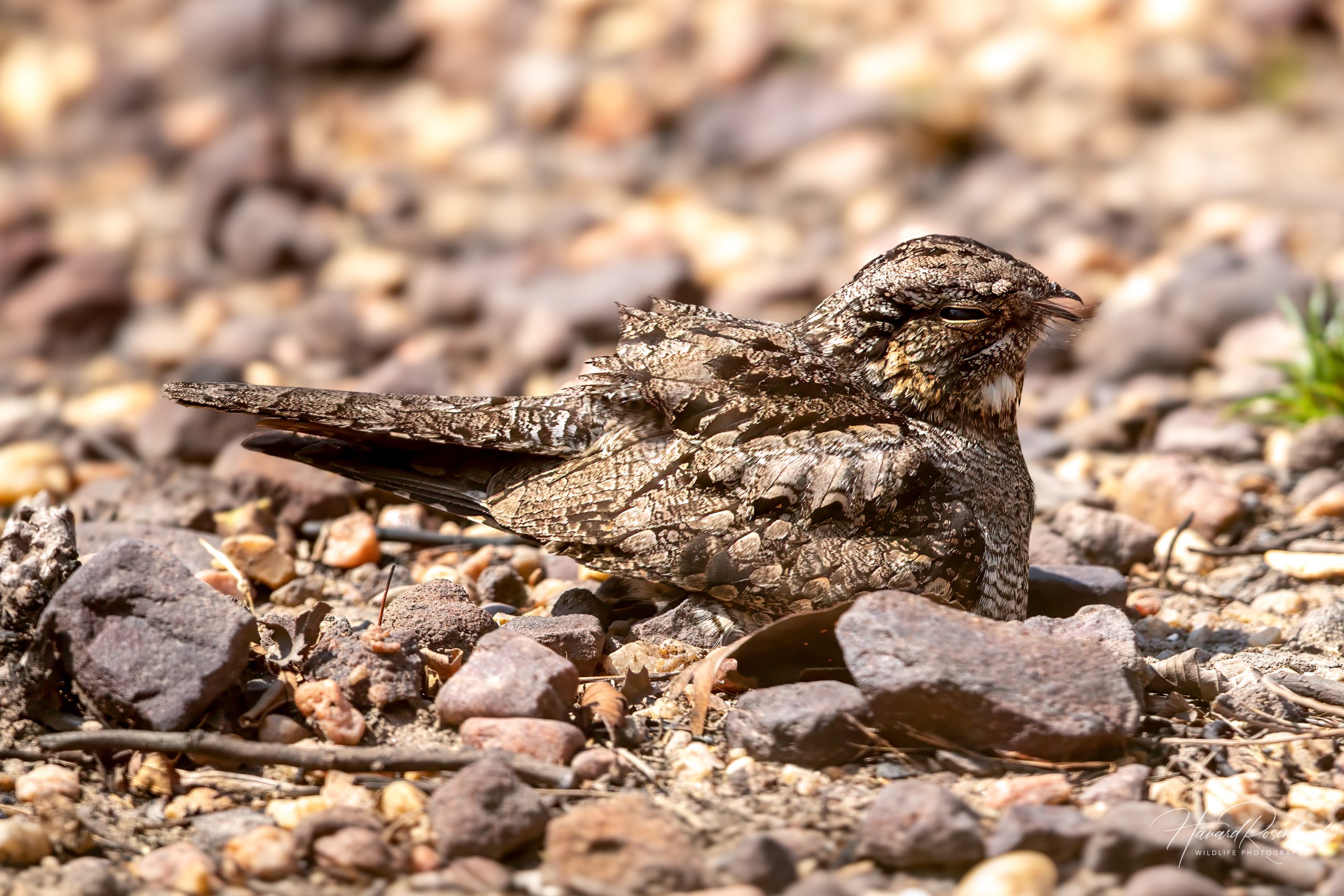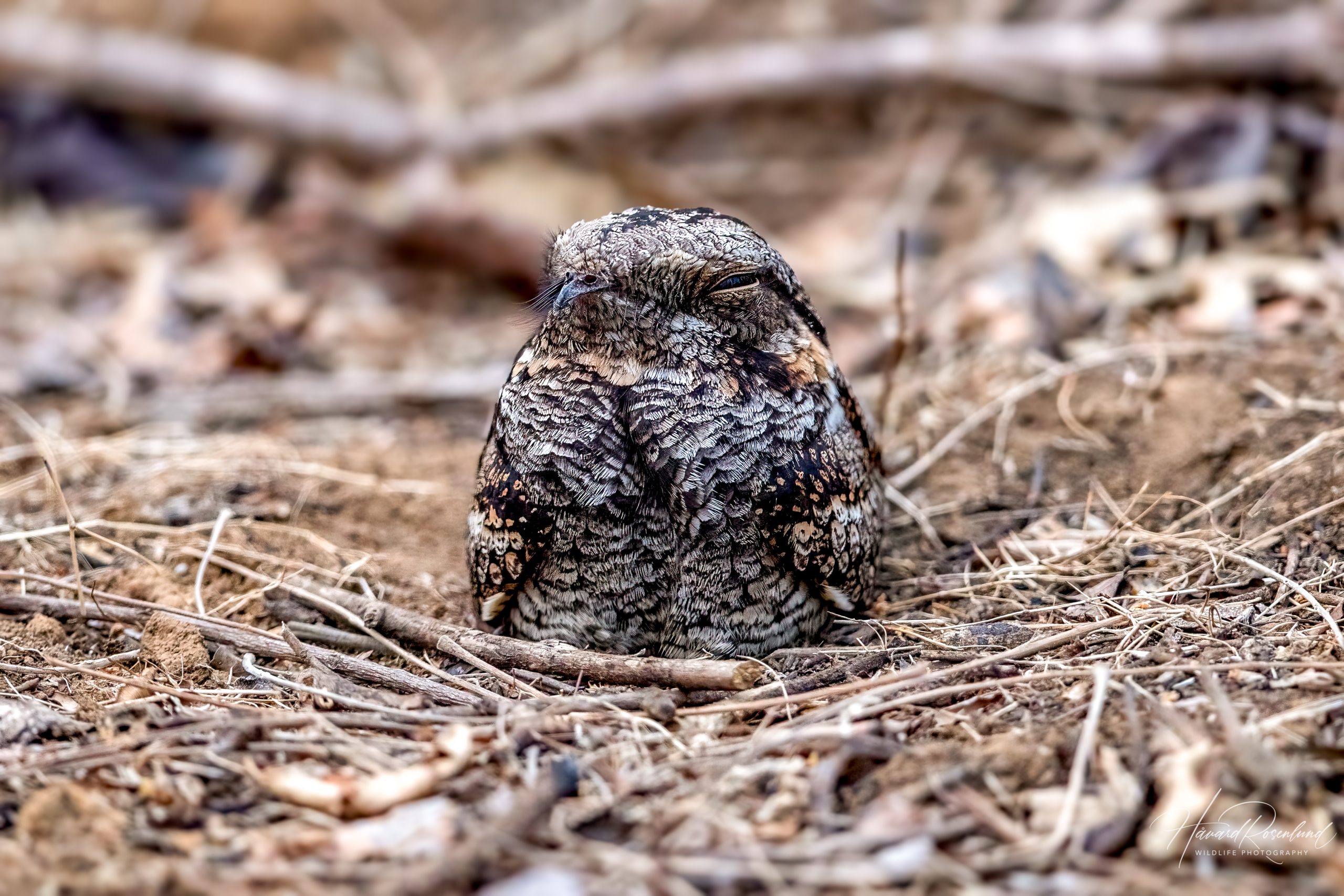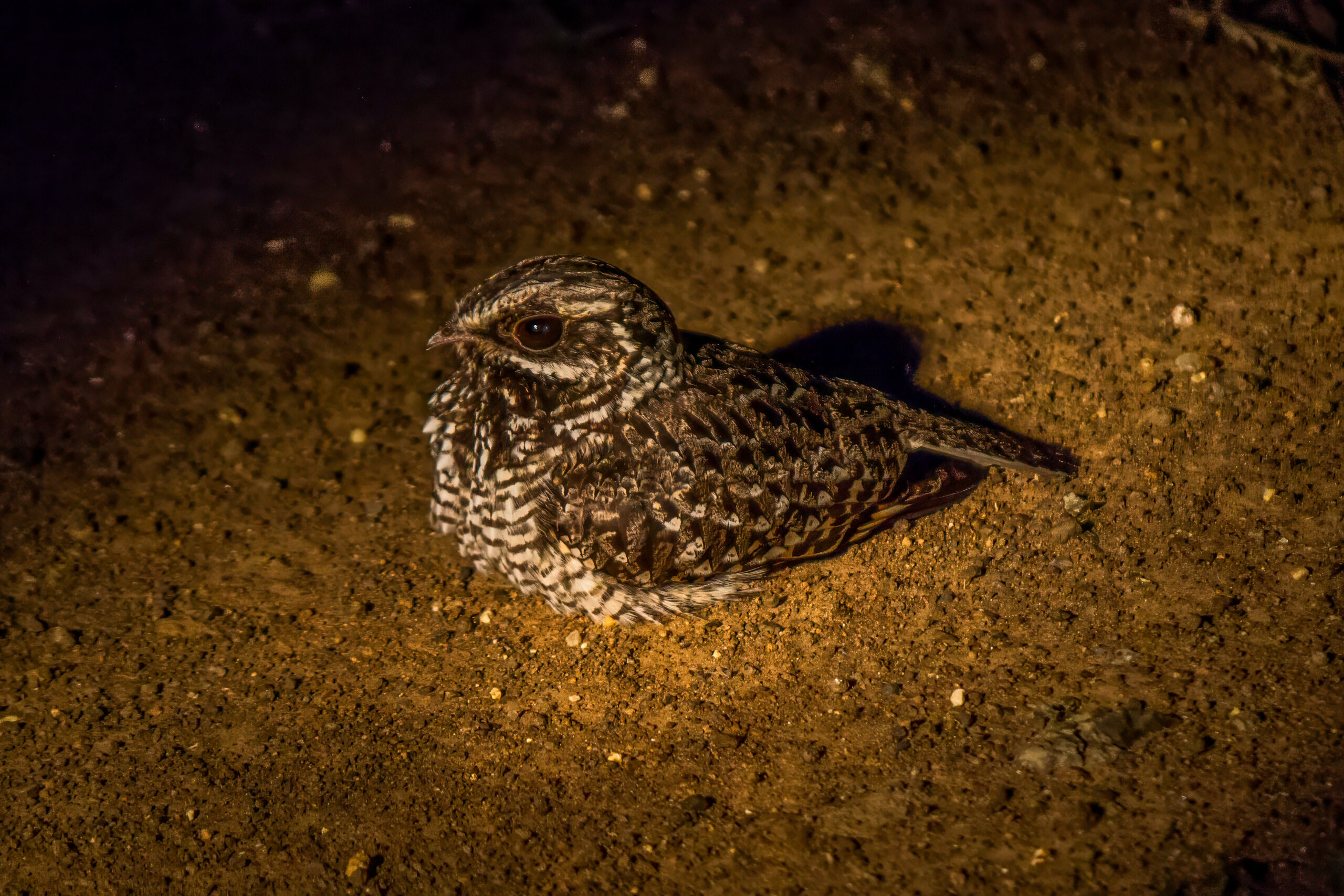Description
The jungle nightjar (Caprimulgus indicus) is a nocturnal bird found mainly in India and Sri Lanka. This species typically measures around 21.5 to 24 cm (8.5-9.5 in) in length. Its plumage is cryptically colored with shades of brown, grey, and black, which aids in camouflage against the forest floor and leaf litter. A key distinguishing feature is the presence of white throat patches on the male, which are rufous colored in females. The jungle nightjar is adept at remaining motionless during the day, relying on its cryptic plumage to avoid detection by predators and humans. It is known for its distinctive “chuck-chuck-chuck” calls, which can be heard during the night, especially during the breeding season.
Diet & habitat
The jungle nightjar inhabits a variety of forested environments, including deciduous and evergreen forests, as well as secondary growth and scrublands. It is also known to reside in plantations and wooded urban areas. This bird is insectivorous, primarily feeding on moths, beetles, and other nocturnal insects. It employs a sit-and-wait hunting strategy, often launching itself from a perch to catch prey in flight. Its large, bristle-fringed mouth aids in capturing insects mid-air, while its keen eyesight and hearing help in detecting prey during the night.
Nesting
The breeding season of the jungle nightjar varies by region but generally spans from March to June. During courtship, males perform aerial displays and emit a series of repetitive calls to attract females. Nesting typically occurs on the ground, often in a simple scrape among leaves or debris, without any additional nesting material. The female usually lays two eggs, which are well-camouflaged to blend with the surrounding environment. Both parents share the incubation duties, which last approximately 18 to 20 days. After hatching, the chicks are cared for by both parents and fledge about 20 to 22 days later.
Status
The jungle nightjar is classified as least concern by the IUCN Red List, indicating that it is not at immediate risk of population decline. However, habitat destruction and fragmentation pose potential threats to this species. Deforestation for agriculture, urban development, and logging are significant factors that could impact their natural habitats and food sources. Conservation efforts focusing on habitat preservation and environmental education are crucial for maintaining stable populations of this cryptic bird.








